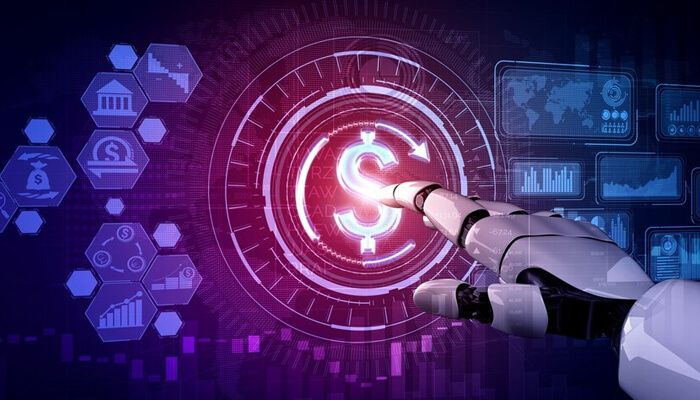The retail industry is currently experiencing a significant transformation thanks to the integration of artificial intelligence into the realm of retail price optimization. The impact of this integration is leading to more profitable and customer-centric retail pricing strategies. This article explores how data-driven insights from artificial intelligence are reshaping retail price optimization, empowering businesses to set prices that not only maximize consumer satisfaction but also drive profitability.
Understanding AI Price Optimization in Retail
Retail price optimization software is a powerful approach that employs data and technology to determine the most effective prices for products or services. Retailers harness historical sales data, market trends, competitor pricing, and consumer behavior to identify patterns and insights that inform AI price optimization in retail. This method relies on intricate algorithms and machine learning techniques to estimate demand elasticity, helping retailers comprehend how changes in pricing influence consumer purchasing behavior. Moreover, retail price optimization enables real-time adjustments to pricing in response to shifts in demand, inventory levels, and market conditions.
AI Price Optimization Benefits
Organizations are increasingly turning to artificial intelligence for pricing in retail due to the transformative advantages it offers across various operational aspects. AI equips retailers to make more informed decisions. By harnessing artificial intelligence pricing, retailers can analyze extensive data to gain insights into consumer behavior. Furthermore, AI price optimization in retail aids in personalizing marketing efforts and streamlining supply chain management.
Personalization through AI-Driven Retail Price Optimization
Personalization is another key facet of AI-driven price optimization, tailoring prices to different customer segments. This enhances the customer experience and promotes loyalty. Moreover, AI’s profit-maximization algorithms calculate price elasticity and identify price points that yield maximum revenue.
The success stories of the FMCG industry adopting AI pricing optimization are inspiring. AI has demonstrated that retail AI price optimization is no longer a theoretical concept. It empowers retailers to respond swiftly to market fluctuations, implement tailored pricing, and maximize profitability.
Incorporating Predictive Pricing into Retail Strategy
Incorporating predictive pricing into a retail strategy involves several essential steps to leverage data analysis and machine learning for optimal pricing decisions. Here’s a comprehensive guide on how to do it:
1. Data Collection and Preparation:
Retailers gather data from various sources, including sales history, customer behavior, competitor pricing, and market trends. This data must be meticulously cleaned, organized, and transformed to eliminate inconsistencies and prepare it for analysis. Once the data is properly prepared, machine learning algorithms can identify patterns, price sensitivities, and market dynamics, enabling retailers to make informed pricing decisions.
2. Select appropriate algorithms:
Retailers choose suitable machine learning algorithms for predictive pricing. Common choices include regression analysis, time-series forecasting, and ML and AI pricing models such as decision trees or neural networks.
3. Feature Engineering:
This is a crucial component of predictive pricing in retail, involving the selection and crafting of relevant data features that significantly impact pricing decisions. Transforming raw data into meaningful and informative features allows retailers to build more accurate predictive models that enhance pricing strategies.
4. Model Development:
AI plays a pivotal role in the development of predictive pricing models in various industries, including retail. These AI pricing models use advanced algorithms to analyze vast datasets of historical and real-time information, including customer behavior, market trends, and competitor pricing. This allows businesses to forecast future demand and optimize pricing strategies.
5. Validation and Testing:
When implementing a predictive pricing model in a retail or commercial setting, validation and testing are essential processes. In order to evaluate the model’s performance and accuracy and make sure it can identify patterns and trends in the real world, validation is crucial. Testing enables companies to evaluate the model’s resilience and efficiency across a range of scenarios and market conditions.
6. Implementation and Monitoring:
Successfully integrating a predictive pricing model into a corporate strategy depends on implementation and monitoring. The predictive pricing model must be deployed and integrated with current systems throughout implementation in order for data to flow freely for in-the-moment analysis. This phase includes setting parameters, defining pricing rules, and aligning the model with the organization’s objectives.
7. Feedback Loop:
Collect data on the actual prices set, sales volumes, and customer responses. Utilize this information to refine and enhance the predictive pricing algorithms seamlessly.
Effectiveness of AI Retail Price Optimization
AI-powered retail price optimization yields tangible results. After implementing AI-based pricing techniques, many retailers have reported significant increases in sales and profitability. The ability to adjust pricing in real-time with the aid of AI ensures competitiveness without compromising revenue.
The impact of AI retail price optimization is substantial. Traditional pricing systems often rely on manual research and historical data, making it challenging to keep pace with volatile market conditions. AI, with its data analysis capabilities and prediction algorithms, changes the game.




